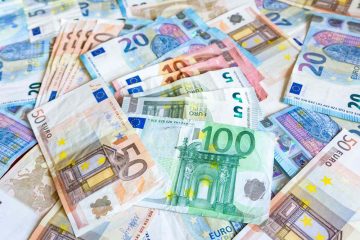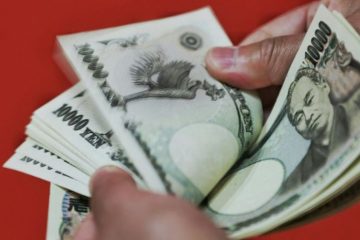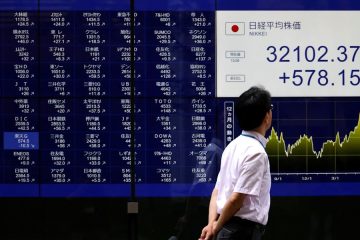| Symbol | Last | Change | % | High | Low |
|---|---|---|---|---|---|
| EUR / SEK | 10.868 | +0.020 | +0.18% | 0.000 | 0.000 |
| Close | GMT Time : Sat Dec 13 2025 04:04 | ||||
EUR/SEK : Intraday Live Chart
EUR/SEK : Technical Signal Buy & Sell
| 5 Min Signal | 1 Hour Signal | 1 Day Signal |
|---|---|---|
| Sell | Buy | Sell |
EUR/SEK : Moving Averages
| Period | MA 20 | MA 50 | MA 100 |
|---|---|---|---|
| 5 Minutes | 10.88 | 10.88 | 10.89 |
| 1 Hour | 10.88 | 10.86 | 10.87 |
| 1 Day | 10.94 | 10.95 | 10.97 |
| 1 Week | 11.01 | 11.10 | 11.24 |
EUR/SEK : Technical Resistance Level
| Resistance 1 - R1 | Resistance 2 - R2 | Resistance 3 - r3 |
|---|---|---|
| 0.000 | 0.000 | 0.000 |
EUR/SEK : Technical Support Level
| Support 1 - S1 | Support 2 - S2 | Support 3 - S3 |
|---|---|---|
| 0.000 | 0.000 | 0.000 |
EUR/SEK : Periodical High, Low & Average
| Period | High Change from Last | Low Change from Last | Average Change from Last |
|---|---|---|---|
| 1 Week | 10.952 -0.084 | 0.000 +10.868 | 10.891 -0.023 |
| 1 Month | 11.030 -0.163 | 0.000 +10.868 | 10.951 -0.083 |
| 3 Month | 11.075 -0.208 | 0.000 +10.868 | 10.974 -0.106 |
| 6 Month | 11.319 -0.451 | 0.000 +10.868 | 10.987 -0.119 |
| 1 Year | 11.632 -0.764 | 0.000 +10.868 | 11.009 -0.141 |
EUR/SEK : Historical Chart
EUR to SEK Exchange Rate History: Euro vs. Swedish Krona in a Floating Battlefield
The EUR to SEK exchange rate stands as a key metric of strength between the Eurozone and Sweden’s independent monetary policy. Unlike many EU members, Sweden chose not to adopt the euro after a 2003 referendum, keeping the Swedish krona (SEK) as a free-floating currency. This decision has led to a volatile but insightful exchange rate history, reflecting diverging policy approaches, risk sentiment, and relative economic resilience.
1999–2004: Euro’s Birth, Krona’s Independence
When the euro was launched in 1999, Sweden remained on the sidelines. At the time, EUR/SEK traded around 8.80, as both currencies adjusted to global expectations.
The Swedish central bank (Riksbank) kept interest rates relatively low to support growth, while the euro, still in its infancy, fluctuated. The exchange rate stayed between 8.60 and 9.30 during these early years, reflecting cautious but balanced monetary stances.
2005–2008: Krona Strengthens Amid Euro Surge
As the European Central Bank (ECB) raised interest rates during the 2005–2008 boom, the euro appreciated broadly. Yet, Sweden’s strong export-led growth and prudent fiscal policies helped the krona keep pace.
By late 2007, EUR/SEK fell to around 9.00, with the krona maintaining strength despite euro gains elsewhere. Sweden’s low debt-to-GDP ratio and strong banking oversight contributed to this resilience.
2009–2012: Financial Crisis & Krona Weakness
The 2008 global financial crisis led to a sharp shift. Risk aversion surged, and smaller currencies like the SEK weakened. EUR/SEK spiked to over 11.00 in early 2009, driven more by capital flight than fundamentals.
Sweden’s swift recovery, however, brought the krona back into favor. By 2012, EUR/SEK had fallen back to near 8.40, reflecting strong GDP rebounds, low unemployment, and minimal public debt—a sharp contrast to struggling eurozone economies.
2013–2019: Range Trading and Diverging Monetary Policies
During this stable period, the euro traded within a broad range between 9.20 and 10.70 SEK. The ECB’s negative interest rates and asset purchases weakened the euro, while the Riksbank also turned dovish, adopting sub-zero rates to combat low inflation.
This ultra-loose monetary policy on both sides muted volatility, though the krona often outperformed due to Sweden’s superior macro metrics. Still, the EUR/SEK averaged around 9.50–10.50, reflecting neutral market expectations.
2020–2024: Pandemic, Inflation & Monetary Policy Reversal
The COVID-19 pandemic saw a renewed appreciation in EUR/SEK, initially spiking to 10.90 in early 2020 as global uncertainty favored the euro. However, Sweden’s light-touch lockdown approach and quick rebound helped the krona recover.
By mid-2021, EUR/SEK had dropped to 10.10, but surging inflation globally led both the ECB and Riksbank to reverse course. Sweden raised rates faster in 2022, strengthening the SEK further.
In 2023, a strong dollar and weak euro drove EUR/SEK as low as 10.20, but by April 2025, the exchange rate has settled around 11.10, as investors weigh eurozone softness versus Sweden’s tightening cycle nearing its end.
✅ Key:
🟢 = SEK appreciated vs euro
❌ = SEK depreciated vs euro
⚠️ = Minimal or range-bound change
📊 EUR to SEK Exchange Rate by Decade
| Decade | Avg. EUR/SEK Rate (Approx) | Change vs. Previous Decade | Key Events |
|---|---|---|---|
| 1999–2004 | 8.60 → 9.30 | ⚠️ Mild depreciation | Euro launch, stable Riksbank policy |
| 2005–2008 | 9.30 → 9.00 | 🟢 SEK appreciation | Sweden growth, eurozone boom |
| 2009–2012 | 9.00 → 8.40 → 11.00 (peak) | ❌ Volatility, then appreciation | Financial crisis, quick Swedish rebound |
| 2013–2019 | 10.70 → 9.50 | ⚠️ Range-bound | Negative rates in both EU and Sweden |
| 2020–2024 | 10.90 → 10.20 → 11.10 | ❌ SEK mild depreciation | Pandemic, ECB/Riksbank divergence, inflation policy response |
In contrast to the EUR/SAR or EUR/DKK, the EUR/SEK exchange rate is a tale of two active central banks. Sweden’s independent monetary policy allows for more flexible currency adjustments. As the eurozone faces persistent structural challenges, the krona remains a market barometer for smaller advanced economies.
EUR/SEK - Euro / Swedish Krona Currency Rate
Live Price of EUR/SEK. EUR/SEK Live Chart, Intraday & Historical Live Chart, Buy Sell Signal, EUR/SEK News, EUR/SEK Averages, Returns & Historical Data
» EUR/SEK
» EUR/SEK Real Time Quotes
» EUR/SEK Live Chart
» EUR/SEK Intraday Chart
» EUR/SEK Historical Chart
» EUR/SEK Buy Sell Signal
» EUR/SEK News
» EUR/SEK Videos
» EUR/SEK Averages
» EUR/SEK Currency Pair
» EUR/SEK Historical Data









